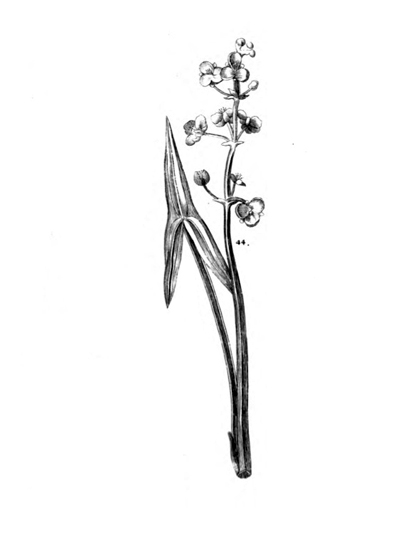Where Did Katniss Get Its Name?
The tuber that gave its name to the heroine of the Hunger Games books has its roots in an era when European explorers met native Americans
/https://tf-cmsv2-smithsonianmag-media.s3.amazonaws.com/filer/20120411125019katnisst.jpg)
On March 29, 1806, the Lewis and Clark expedition neared Sauvie Island between what is now Clark County, Washington and Multnomah County, Oregon. Captain William Clark wrote:
encamped on a butifull grassy plac, where the nativs make a portage of their canoes, and wappato roots to and from a large pond at a short distance. in this pond the nativs inform us they collect great quantities of pappato, which the women collect by getting into the water, sometimes to their necks holding by a small canoe and with their feet loosen the wappato or bulb of the root from the bottom from the Fibers, and it imedeately rises to the top of the water they collect & throw them into the canoe, those deep roots are the largest and best roots.
Nearly a half century earlier, in 1749, botanist Pehr Kalm traveled through New Sweden, now Delaware and southern New Jersey, where he, too, heard reports of Native Americans harvesting hen’s-egg-sized tubers of the broadleaf arrowhead from marshes and wetlands. Baked and boiled, Kalm found the tubers’ flesh to be dry and almost as good as potatoes. The plant reminded him of a species from his native Sweden, which the German botanist Carl Ludwig Willdenow classified as Sagittarius sagittifolia, although Kalm noted the North American tuber far surpassed the European one in size. Kalm reports in Travels in North America :
A man of ninety-one years of age, called Nils Gustafson, told me, that he had often eaten these roots when he was a boy, and that he like them very well at that time. He added that the Indians, especially their women, travelled to the islands, dug out the roots, and brought them home; and whilst they had them they desired no other food. They said that the hogs, which are amazingly greedy of them, have made them very scarce.
What was it called? Kalm or his interpreters heard its native name pronounced as “katniss.” And the wild plant wasn’t the only vegetable the Native Americans called katniss. Kalm writes: “When the Indians come down to the coast and see the turneps of the Europeans, they likewise give them the name of katniss.”
Perhaps The Hunger Games, Suzanne Collins’ popular young-adult trilogy turned blockbuster film, will foster a renewed appetite for foraging. (The book, which I haven’t read, stays true to the foraging techniques described by many early explorers, although it’s my understanding that Katniss, the heroine of the story, does not go up to her neck for the “small, bluish tubers that don’t look like much.”) Sure, a similar arrowroot (T’zu-ku) can be picked up at Asian groceries during Chinese New Year, but maybe young readers should be encouraged to get their feet wet. After all, in some places, katniss is considered a weedy invasive.
Top drawing from Grundriss der Kräuterkunde zu Vorlesungen (Principles of Botany), 1805. Bottom image courtesy of Tama Matsuoka, who also provides a recipe for katniss.
